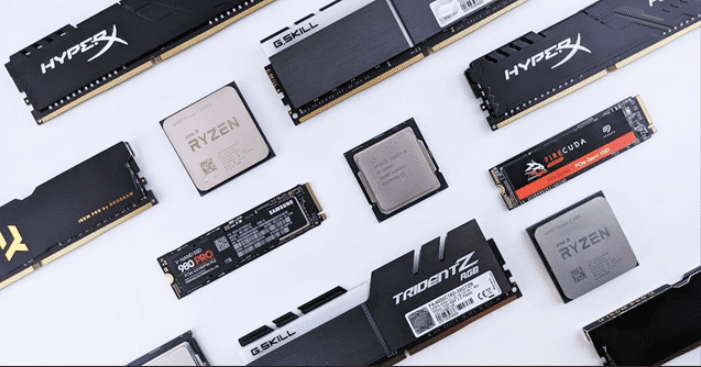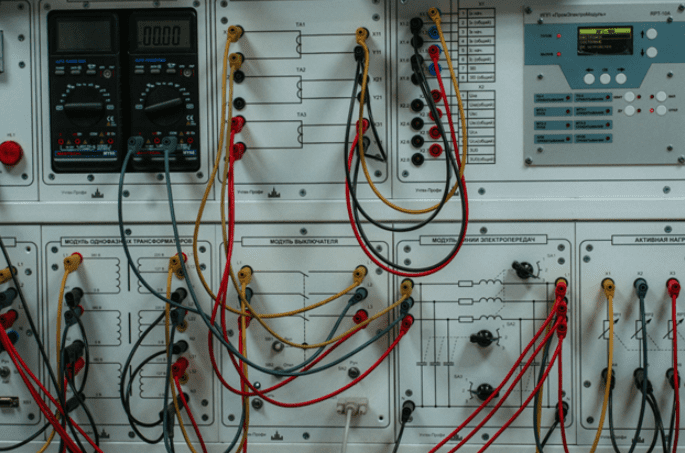
In 2025, tech-savvy homeowners are making bold moves to upgrade their electrical systems—and it’s not just about keeping up with the latest gadgets. As smart homes become the norm, the demand for reliable and efficient electrical infrastructure is skyrocketing. We’re witnessing a shift where energy efficiency, safety, and enhanced functionality take center stage in home upgrades.
Modern electrical systems aren’t just about power; they’re the backbone of our connected lifestyles. From smart lighting to advanced security systems, homeowners are investing in technology that not only enhances convenience but also reduces energy costs. This transformation is fueling a surge in demand for high-performance components like bnc connectors and adapters, which support everything from home surveillance networks to sophisticated AV setups.
Additionally, the integration of smart driving technologies is influencing residential upgrades too. Some homeowners are choosing to install dedicated circuits or charging solutions for their vehicles and radar devices. Popular brands such as Escort are leading the way in radar detection systems, highlighting the growing intersection between home tech and automotive innovation.
These enhancements are more than just aesthetic—they’re a reimagining of how homes function. With each upgrade, houses are becoming more responsive, secure, and efficient, giving homeowners better control and peace of mind in a digitally connected world.
Overview of Home Electrical System Upgrades
Upgrading home electrical systems involves enhancing existing infrastructure to support modern technology. Homeowners increasingly seek improved electrical capacity to meet the demands of smart devices. This transition requires several key upgrades.
Increased Power Capacity
Increased power capacity upgrades enable homeowners to handle higher electrical loads. By installing additional circuit breakers or upgrading to a larger electrical panel, we ensure our homes can efficiently power multiple devices simultaneously.
Smart Wiring
Smart wiring systems streamline connections between devices. They involve a network of wires that allow for centralized control of smart home features. Installing structured wiring simplifies the integration of smart lights, thermostats, and security cameras, enhancing overall convenience and functionality.
Energy-Efficient Solutions
Energy-efficient solutions reduce overall energy consumption. Upgrading to LED lighting, smart thermostats, and energy-efficient appliances minimizes our environmental footprint. These upgrades not only decrease energy bills but also contribute to long-term sustainability.
Voltage Regulation
Voltage regulation upgrades prevent damage to sensitive electronic devices. Installing whole-house surge protectors safeguards against electrical surges. By regulating voltage levels, we protect our investments in technology.
Home Automation Integration
Home automation integration creates a seamless experience. Installing hubs and controllers allows us to manage devices remotely. With voice control and smartphone applications, we easily adjust settings and schedules for lights and appliances.
Safety Enhancements
Safety enhancements ensure our electrical systems meet current standards. GFCI outlets and AFCI breakers provide crucial protection against electrical shock and fires. Prioritizing safety through upgrades keeps our homes secure and compliant with regulations.
These comprehensive upgrades transform our homes into efficient, safe, and smart environments. By investing in modern electrical systems, we enhance convenience, cut energy costs, and ensure our residences are future-ready.
Benefits of Upgrading Electrical Systems
Upgrading electrical systems offers numerous advantages, enhancing safety and improving energy efficiency. Homeowners increasingly recognize these benefits as they invest in modern infrastructure.
Enhanced Safety Features
Upgrading electrical systems enhances safety through the installation of advanced features. We implement Ground Fault Circuit Interrupter (GFCI) outlets, which minimize the risk of electrical shock in damp areas. Arc Fault Circuit Interrupters (AFCIs) protect against electrical fires by detecting unintended electrical arcs. Our systems incorporate surge protectors that shield sensitive electronics from power surges. Comprehensive inspections and replacements of outdated wiring further ensure compliance with current safety standards. By prioritizing these safety enhancements, we create environments that significantly reduce hazards, elevating the overall peace of mind for homeowners.
Increased Energy Efficiency
Increased energy efficiency results from modernizing electrical systems. We adopt energy-efficient lighting solutions like LED fixtures, which consume up to 80% less energy than traditional bulbs. Smart thermostats optimize heating and cooling by learning residents’ preferences, reducing energy waste. By integrating energy monitoring systems, homeowners gain insights into their consumption patterns, allowing for informed decisions on energy use. Upgrading to higher-capacity circuits accommodates energy-demanding devices efficiently, minimizing overload risks. Overall, these enhancements lead to significant energy savings, lowering utility bills and contributing to a sustainable home environment.
Smart Home Integration

Smart home integration plays a vital role in the electrical upgrades homeowners are making in 2025. As we embrace cutting-edge technologies, our electrical systems must evolve to support their demands.
Popular Smart Home Technologies
We see a surge in popular smart home technologies, including smart lighting controls, programmable thermostats, and advanced security systems. Smart lighting allows us to remotely adjust brightness and color, enhancing ambiance and energy efficiency. Programmable thermostats help us optimize heating and cooling, providing significant savings on utility bills. Additionally, advanced security systems, featuring smart cameras and doorbells, offer real-time surveillance and alerts, ensuring safety and convenience.
Impact on Daily Life
Smart home integration significantly impacts our daily lives. We enjoy increased convenience with voice-activated assistants controlling appliances and entertainment systems. Automation simplifies our routines, from setting schedules for lighting and temperature to managing multiple devices from a single app. Enhanced safety features, such as motion sensors and smart locks, provide peace of mind while we’re away. Overall, these upgrades make our homes more functional, energy-efficient, and secure, ultimately improving our quality of life.
Sustainability Considerations
Sustainability plays a crucial role in our decision-making when upgrading electrical systems. Tech-savvy homeowners prioritize eco-friendly solutions that contribute to a greener future while enhancing their home’s functionality.
Eco-Friendly Electrical Solutions
We see a significant shift toward eco-friendly electrical solutions as homeowners seek to minimize their environmental impact. Solar panels, energy-efficient LED lighting, and smart appliances rank among the most popular upgrades. Solar panels harness renewable energy, reducing dependence on the grid and lowering carbon footprints. LED lighting consumes up to 75% less energy than traditional bulbs, offering longer lifespans and enhanced efficiency. Smart appliances utilize technology to optimize energy usage, automatically adjusting settings based on occupancy and demand. Collectively, these solutions foster sustainable living while supporting a cleaner environment.
Long-Term Cost Savings
Upgrading to energy-efficient electrical systems translates into substantial long-term cost savings. By investing in smart thermostats and energy monitoring systems, homeowners gain precise control over their energy consumption, reducing monthly utility bills. For example, integrating smart devices can lead to savings of up to 30% on heating and cooling costs. Enhanced safety features like surge protectors and GFCI outlets also prevent damage to appliances, reducing replacement costs and maintenance needs. These upgrades not only contribute to a more sustainable home but also result in significant financial benefits over time.
Trends in Electrical System Upgrades for 2025
Homeowners are embracing innovative technologies and shifting consumer demands in their electrical system upgrades for 2025. These trends highlight a growing focus on efficiency, convenience, and sustainability.
Innovations in Electrical Technology
Innovations in electrical technology are driving significant upgrades in residential systems. Smart circuit breakers allow real-time monitoring and remote management of energy consumption. Wireless power distribution systems enhance installation flexibility, while energy management systems optimize power usage across devices. Homeowners increasingly adopt inductive charging solutions for devices, eliminating the need for traditional outlets. Enhanced battery storage options enable better energy use, particularly for homes with solar panels. These advancements create not only more control but also efficiency in day-to-day energy needs.
Consumer Preferences and Expectations
Consumer preferences in 2025 reflect a demand for multifunctional electrical systems. Homeowners expect seamless integration of smart appliances, advanced security features, and energy-efficient solutions. Higher power capacity is crucial as more smart devices are introduced. Users prioritize sustainability, seeking eco-friendly upgrades like solar power options and LED lighting. Safety remains paramount, with preferences for systems incorporating GFCI outlets and AFCI breakers to reduce hazards. Ultimately, these expectations drive the evolution of electrical systems toward enhanced functionality, efficiency, and security, ensuring homes meet modern lifestyles. For more insights on the evolution of home technology, check out Energy.gov.






